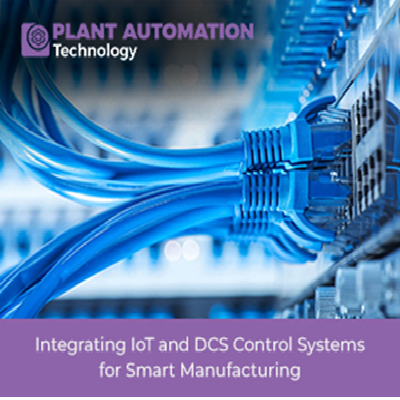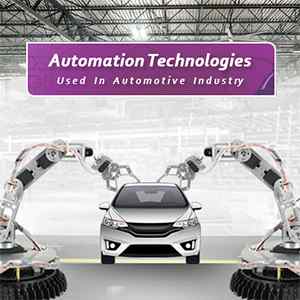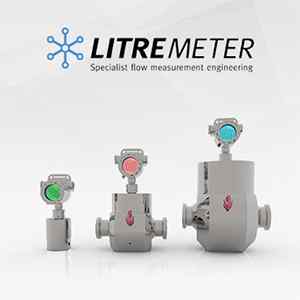Integrating IoT and DCS Control Systems for Smart Manufacturing

Introduction
The landscape of manufacturing has undergone a profound revolution known as Industry 4.0, the fourth industrial revolution. This paradigm shift introduces a plethora of advanced technologies with the goal of enhancing efficiency, flexibility, and productivity in the manufacturing sector. At the heart of this transformation lie two pivotal technologies: the Internet of Things (IoT) and Distributed Control Systems (DCS). Through their seamless integration, manufacturers can establish intelligent and interconnected systems, leading to optimized operations, streamlined processes, and data-driven decision-making capabilities.
A) Understanding IoT and DCS Control Systems for Smart Manufacturing
1.1 Internet of Things (IoT): The IoT refers to a network of interconnected devices and objects equipped with sensors and software that enable data collection and exchange over the Internet. Within the context of smart manufacturing, IoT devices can be integrated into diverse equipment, machines, and production lines, enabling real-time data acquisition on critical parameters like temperature, pressure, humidity, vibration, and various other metrics.
The data gathered by IoT devices is sent to a central cloud-based platform or an on-premise edge gateway. In these locations, advanced analytics tools and artificial intelligence algorithms process and analyze the data. The resulting insights empower manufacturers to monitor the health of their equipment, optimize processes, and make data-driven decisions, leading to enhanced overall manufacturing efficiency.
1.2 Distributed Control Systems (DCS): A Distributed Control System (DCS) is a specialized industrial automation control system that enables centralized control and monitoring of complex processes across various industrial units. DCS systems consist of multiple control modules distributed throughout the manufacturing facility, each responsible for managing specific process parameters and communicating with the central control unit.
Traditionally, DCS systems were standalone entities that required dedicated hardware and communication protocols. However, with advancements in technology, modern DCS solutions are becoming more flexible, scalable, and interoperable, making them ideal candidates for integration with IoT platforms.
B) Benefits of Integrating IoT and DCS Control Systems
2.1 Enhanced Data Collection and Analysis: The integration of IoT with DCS enables manufacturers to collect an unprecedented amount of real-time data from IoT devices deployed across the manufacturing environment. This data includes information from sensors on production machines, energy consumption, environmental conditions, and quality control parameters.
The DCS system serves as a central hub, collecting and processing this data. Advanced analytics and machine learning algorithms are employed to derive valuable insights, including performance trends, potential bottlenecks, and correlations between process variables. Manufacturers can leverage these insights to optimize production processes, minimize waste, and improve product quality.
2.2 Improved Process Visibility and Control: By integrating IoT data with DCS control capabilities, manufacturers gain a comprehensive view of their entire manufacturing operations. The DCS provides a unified interface that displays real-time data from IoT devices alongside the status of various industrial processes.
This enhanced visibility allows operators and decision-makers to have a better understanding of the production process, identifying inefficiencies, deviations, and anomalies in real-time. As a result, they can respond promptly to any issues, reducing downtime and improving overall process efficiency.
2.3 Predictive Maintenance: One of the most significant advantages of integrating IoT and DCS is the implementation of predictive maintenance strategies. IoT sensors continuously monitor the condition of machinery and equipment, capturing data on factors such as vibration, temperature, and performance indicators.
DCS systems process this data and leverage predictive analytics algorithms to detect early signs of equipment degradation or potential failures. By predicting maintenance needs, manufacturers can plan maintenance activities proactively, avoiding unexpected breakdowns and reducing maintenance costs.
2.4 Energy Efficiency: By utilizing IoT sensors to monitor energy consumption and leveraging DCS for precise control over industrial processes, manufacturers can optimize energy usage. This integrated system enables real-time adjustments to equipment settings based on energy demand and production requirements, resulting in substantial energy savings and a reduced environmental footprint.
C) Challenges and Considerations
3.1 Security and Data Privacy: Integrating IoT devices with DCS systems creates a wider attack surface, making the system more susceptible to cybersecurity threats. To ensure the protection of data and prevent unauthorized access, manufacturers must focus on implementing robust security measures, including encryption, authentication, and access controls. Prioritizing data privacy is essential to uphold the confidentiality and integrity of the integrated system.
In addition, it is essential to address data privacy concerns, particularly when transmitting manufacturing environment data to external cloud-based platforms. Compliance with relevant data protection regulations becomes paramount in preserving the confidentiality and integrity of sensitive information.
3.2 Interoperability: The effective integration of IoT and DCS hinges on achieving compatibility and seamless communication among diverse IoT devices and the existing DCS infrastructure. To enable this, standardization of communication protocols and data formats is crucial, ensuring that data from various sensors can be readily understood and utilized by the DCS system.
3.3 Scalability: As manufacturing operations expand or undergo changes, the integrated IoT and DCS system must be capable of accommodating increased scale and complexity. A flexible architecture that facilitates the effortless addition or removal of IoT devices and DCS components is crucial for future-proofing the smart manufacturing environment.
D) Use Cases of IoT and DCS Integration in Smart Manufacturing:
4.1 Remote Monitoring and Control: The integration of IoT and DCS enables remote monitoring and control of manufacturing processes. With IoT sensors capturing real-time data from equipment and machines, operators and managers can access critical information from anywhere at any time. This capability is especially valuable for multinational corporations with multiple production sites, as it allows centralized monitoring and swift response to any deviations or issues across various locations. Moreover, remote control functionality enables operators to adjust process parameters and make necessary changes without physically being present on the factory floor, further increasing operational efficiency and reducing downtime.
4.2 Supply Chain Optimization: Smart manufacturing goes beyond optimizing internal processes; it involves integrating the entire supply chain. Deploying IoT sensors along the supply chain enables monitoring of inventory levels, tracking shipments, and collecting data on transportation conditions. By integrating this data with the DCS system, manufacturers achieve end-to-end visibility of their supply chain, identifying potential bottlenecks, minimizing delays, and enhancing overall logistics efficiency. This integrated approach facilitates just-in-time production and inventory management, resulting in cost savings and a more agile supply chain.
4.3 Quality Control and Compliance: In industries where product quality and compliance are of utmost importance, the integration of IoT and DCS plays a crucial role in enhancing quality control processes. Continuous monitoring of production parameters by IoT sensors ensures that products meet pre-defined quality standards. DCS systems then compare real-time data with predetermined thresholds and promptly trigger alerts if any deviations are detected. This proactive approach empowers manufacturers to address quality issues before they escalate, thereby reducing the number of defective products and potential recalls. Furthermore, the integration facilitates compliance with industry regulations and standards by providing accurate data records and traceability throughout the production process.
4.4 Continuous Process Improvement: IoT and DCS integration lay the foundation for continuous process improvement initiatives. The vast amount of data collected and analyzed provides valuable insights into operational inefficiencies and areas for optimization. Manufacturers can leverage this data to implement data-driven decision-making, design targeted process improvements, and iterate on strategies for increased productivity and cost-effectiveness. Continuous improvement cycles can be established, allowing manufacturers to refine their processes continuously and stay competitive in the fast-paced manufacturing landscape.
E) Future Trends and Outlook
The integration of IoT and DCS in smart manufacturing is an ongoing journey with several promising future trends. These trends include the incorporation of Artificial Intelligence (AI) and Machine Learning (ML) algorithms for more advanced predictive maintenance and process optimization. AI-powered systems can autonomously analyze vast datasets and make real-time adjustments to manufacturing processes for optimal performance.
Moreover, edge computing is emerging as a prominent solution to tackle latency and bandwidth challenges in the integration of IoT and DCS. Edge computing entails processing data closer to its source, thereby minimizing the requirement for extensive data transmission to centralized servers. This approach significantly improves responsiveness, security, and overall system performance, particularly in large-scale industrial environments.
Conclusion
In conclusion, the integration of IoT and DCS control systems for smart manufacturing is a game-changing advancement that leads to enhanced efficiency, quality, and sustainability in industrial processes. The combination of real-time data from IoT sensors with the centralized control capabilities of DCS systems empowers manufacturers with unparalleled visibility, control, and data-driven decision-making capabilities. As technology continues to evolve, the incorporation of AI, ML, and edge computing will further unlock the full potential of this integration, propelling smart manufacturing into a realm of continuous improvement and competitive advantage. Embracing this technological shift positions manufacturers at the forefront of Industry 4.0, empowering them to adapt, innovate, and thrive in an increasingly connected and data-driven future.







